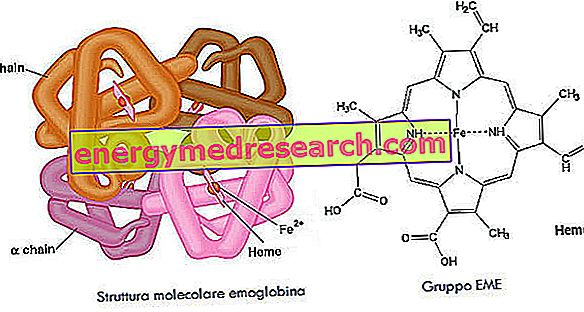Argentinian sulfadiazine is nothing but the silver salt of sulfadiazine, an antibacterial belonging to the class of sulfamides.

Sulfadiazine Argentica - Chemical Structure
Silver sulfadiazine is available in cream for cutaneous use.
Besides being effective against various bacteria, silver sulfadiazine can also be effective against some types of fungi.
Indications
For what it uses
The use of silver sulfadiazine is indicated for:
- Prophylaxis and local treatment of skin infections in the presence of II and III degree burns;
- Local treatment of varicose ulcers;
- Local treatment of pressure sores;
- Treatment of other infected dermatological disorders or those susceptible to superinfections.
Warnings
The use of silver sulfadiazine in patients with hepatic and / or renal insufficiency should be done very carefully.
The use of silver sulfadiazine - especially if for very long periods - can cause sensitization. If these phenomena occur, treatment with the drug must be stopped immediately.
Furthermore, treatment with silver sulfadiazine must be stopped immediately if superinfections occur with resistant microorganisms (bacteria or fungi).
During the treatment of burns that cover a high body surface, sulfadiazine can be absorbed and reach the bloodstream and can reach rather high concentrations. In these cases, it is advisable to carry out checks to determine the plasma drug concentration and checks of liver and kidney function.
If any type of allergic reaction occurs, treatment with silver sulfadiazine should be stopped immediately and you should contact your doctor.
Interactions
The concomitant administration of silver sulfadiazine and local proteolytic enzymes can cause the deactivation of the latter due to the presence of silver ions. Therefore, this association should be avoided.
In any case, it is still advisable to inform your doctor if you are taking - or have recently been - any type of medication, including non-prescription drugs and herbal and / or homeopathic medicines.
Side effects
Argentinian sulfadiazine - like any other medicine - can induce various side effects, although not all patients experience them. The type of adverse effects and the intensity with which they occur are not the same in each patient, but vary according to the sensitivity that each individual has towards the drug.
The main side effects that may occur during treatment with the drug are listed below.
Allergic reactions
Argentine sulfadiazine can trigger local allergic reactions in sensitive individuals. However, such reactions are rather rare.
Disorders at the site of administration
During the use of silver sulfadiazine, local reactions can occur at the application area. These reactions consist of pain and burning.
Systemic side effects
When silver sulfadiazine is applied on very large areas, the occurrence of side effects typical of sulfonamides administered systemically cannot be excluded. This happens because the drug is absorbed through the skin, reaches the bloodstream and can reach plasma concentrations equal to those reached with the use, in fact, of systemic sulfonamides.
Overdose
If you suspect you have taken too much silver sulfadiazine, you must contact your doctor immediately or go to the nearest hospital.
Action mechanism
As mentioned above, the silver sulfadiazine is the salified form of sulfadiazine, an antibacterial belonging to the class of sulfamides.
It is an antimicrobial with a bacteriostatic type of action, ie it is not able to kill bacterial cells, but it inhibits their growth.
Argentinian sulfadiazine - like other sulfamides - exerts its activity by inhibiting the synthesis of tetrahydrofolic acid.
Tetrahydrofolic acid is an essential compound for the synthesis of purine and pyrimidine bases that will then go to make up bacterial DNA.
More specifically, sulfadiazine - like all sulfa drugs - competitively inhibits dihydropteroate synthetase, one of the enzymes involved in the synthesis of the aforementioned tetrahydrofolic acid.
In this way, the synthesis of tetrahydrofolic acid stops, the bacteria are no longer able to synthesize new DNA and, consequently, their replication is blocked.
Mode of Use - Posology
Silver sulfadiazine is available as a skin cream.
Before applying the cream, the lesions should be thoroughly cleaned.
After that, a layer of cream at least 2-3 mm thick can be applied.
The cream can be applied directly to the lesions, or it can be applied to a sterile gauze that will later be applied to the lesions.
It is recommended to apply silver sulfadiazine once or twice a day.
Treatment should continue until complete healing.
Pregnancy and breastfeeding
The use of silver sulfadiazine by pregnant women or by breast-feeding mothers should only be done if the doctor considers it absolutely essential.
In any case, the use of silver sulfadiazine during the last period of pregnancy is contraindicated.
Contraindications
The use of silver sulfadiazine is contraindicated in the following cases:
- In patients with known hypersensitivity to the silver sulfadiazine itself;
- In premature and newborn babies;
- During the last period of pregnancy.



